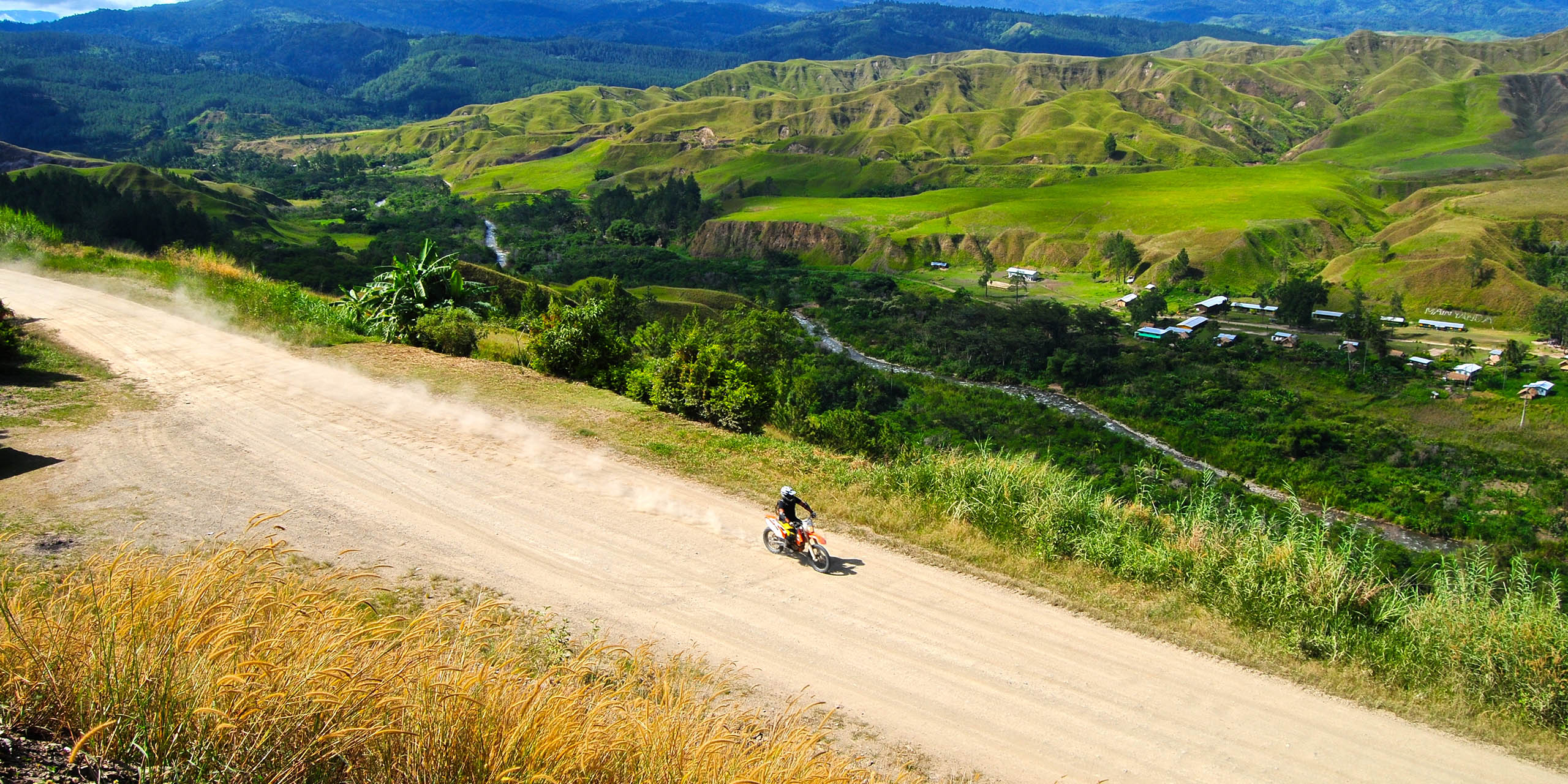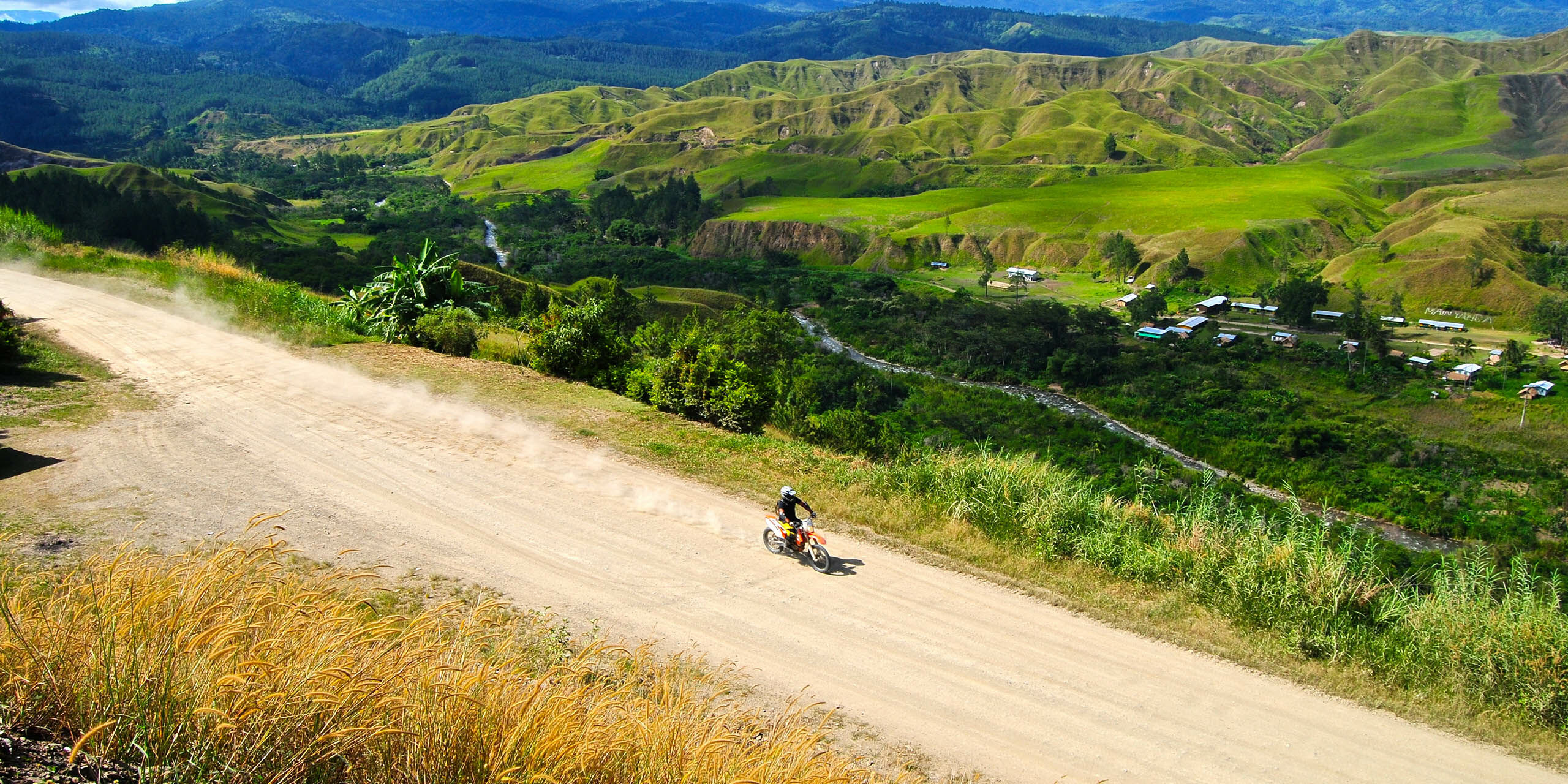
In the 1980s there was a guy on TV – an intrepid Aussie explorer called Alby Mangels who travelled to the most remote and exotic places on the planet.
In one episode, he visited Aseki in the highlands of Papua New Guinea, where instead of burying their dead, villagers smoked them in longhouses and assembled them in life-like positions in shrines in the jungle.
Alby’s footage of these shrivelled mummies made a lasting impression on my mind. So when work took me to Papua, I factored a visit to Aseki into the equation. But unlike good old Alby, who used a big 4WD on his trip, I upped the ante and found a guide who said he could take us to Aseki on a couple of dirt bikes.
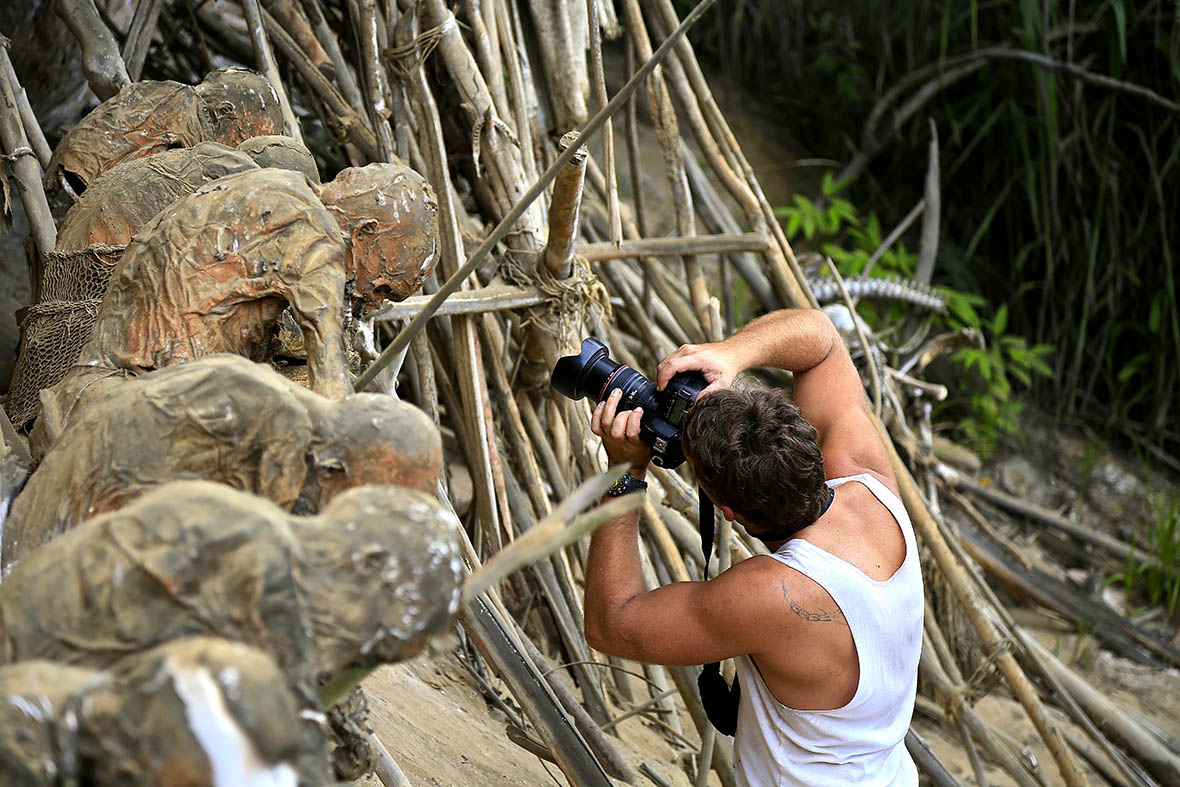
My journey begins in Lae, a city on the east coast of Papua New Guinea where I rendezvous with my guide, Malcolm Gauthier. A New Guinean-Canadian who grew up on a mission his family founded in the highlands, Malcolm has the street smarts to handle the challenges of riding in Papua plus the savvy needed to take care of—and entertain—tourists like me.
“I could live in Canada if I wanted to,” he says, “but everything has already been done. Papua New Guinea is still developing and any business you open—a fishing charter, a motorbike company, even a mechanical workshop—becomes an overnight success so long as you have good management skills.”
We plan to shoot off early on the day after I arrive. But when a downpour sets in, we have no choice but to sit around and wait till it passes. It’s just short of midday when we finally head out of town.
About 20km out of Lae, we turn left onto a dirt road that transports us to an idyllic rural scene backdropped by blue-grey mountains. It leads to a one-lane steel bridge over the caramel-coloured Markham River and then detours along the left bank.
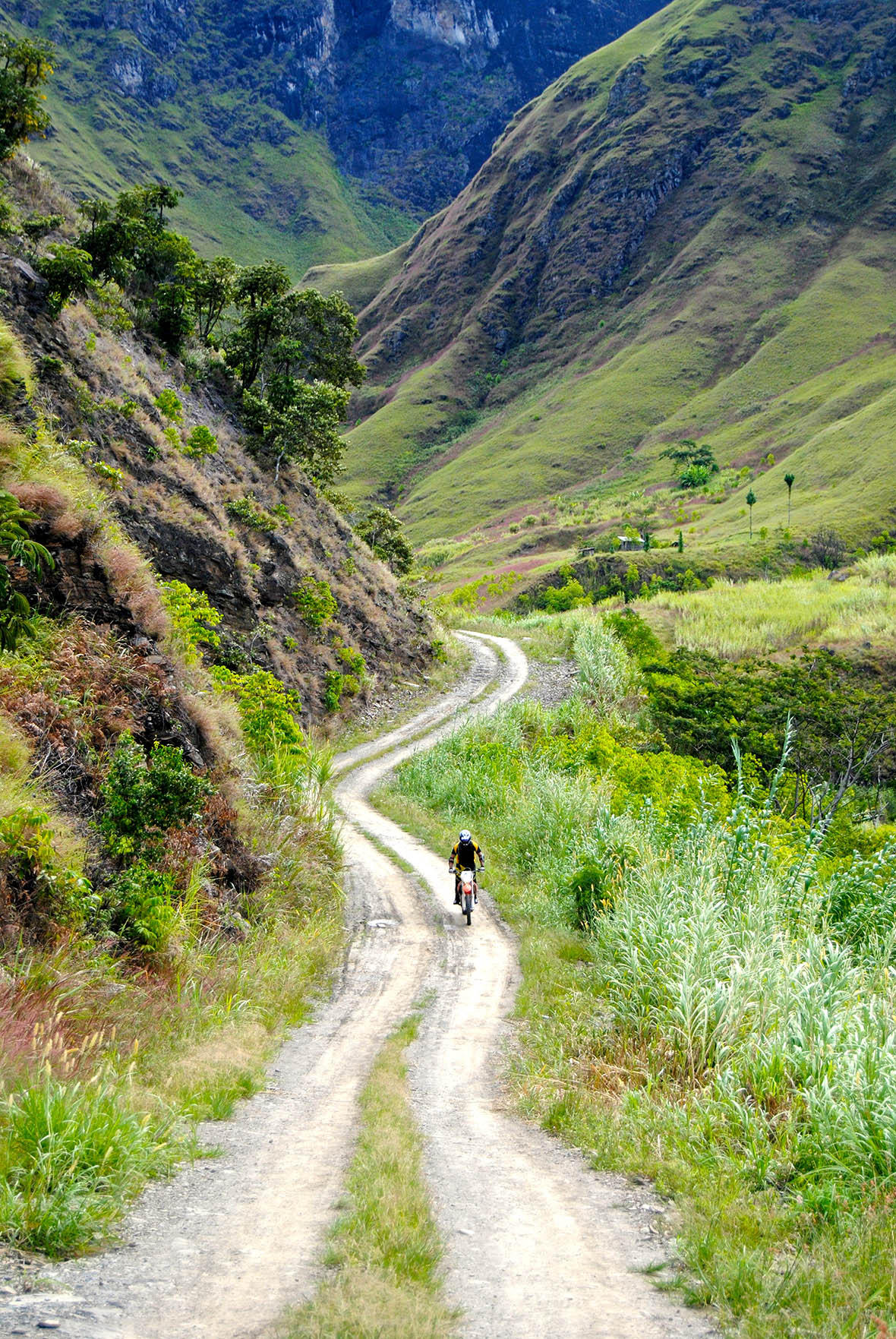
A second left turn takes us onto a fire trail that cuts deep into the mist-shrouded jungle without a soul in sight. Malcolm lets me ride in front and set the pace, which given the size of the ruts and bogs, rarely surpasses 40kph. It’s hard going but good fun and within a short time, we’re covered from head-to-toe in gooey, lukewarm mud.
The river crossings are a blast, though less so for Malcolm who has to waddle in first to ensure they’re shallow enough for us to ride across. Two hours later we enter a velvet-green valley where we see signs of human life again: an old woman walking bent under a large pile of kindling. A farmer uses a machete to clear a patch of jungle. Men pan for gold in a river bed and kids kick a can around the road.
As we stop at the next river crossing, a woman with betel-stained teeth offers me a bunch of bananas. I pull out my wallet, but Malcolm tells me it’s unnecessary, that it’s their custom to give fruit to passers-by so they can brag about it to their mates. I try giving her a few bucks all the same but she refuses to accept it and walks away giggling.
The further inland we travel, the narrower the valley becomes. Soon we find ourselves riding along a track that hugs the side of a steep ravine where waterfalls spill onto the track and spill into a raging river far below.
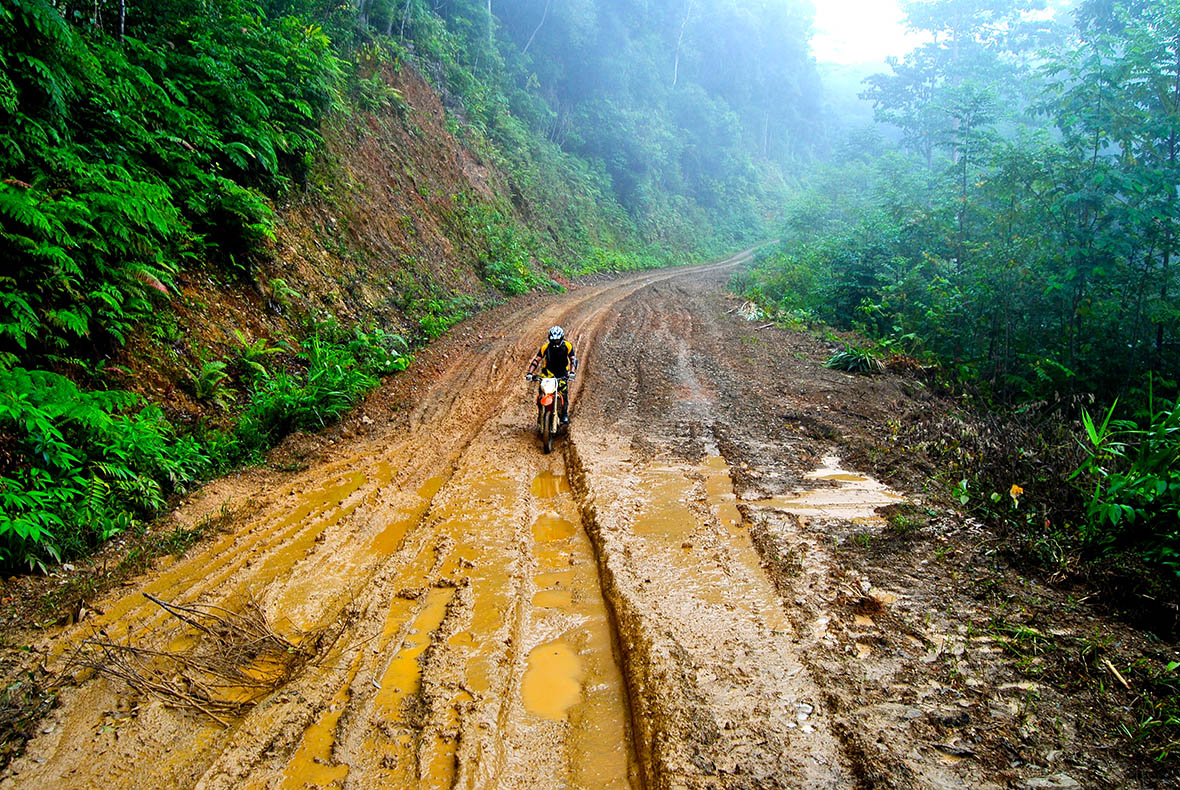
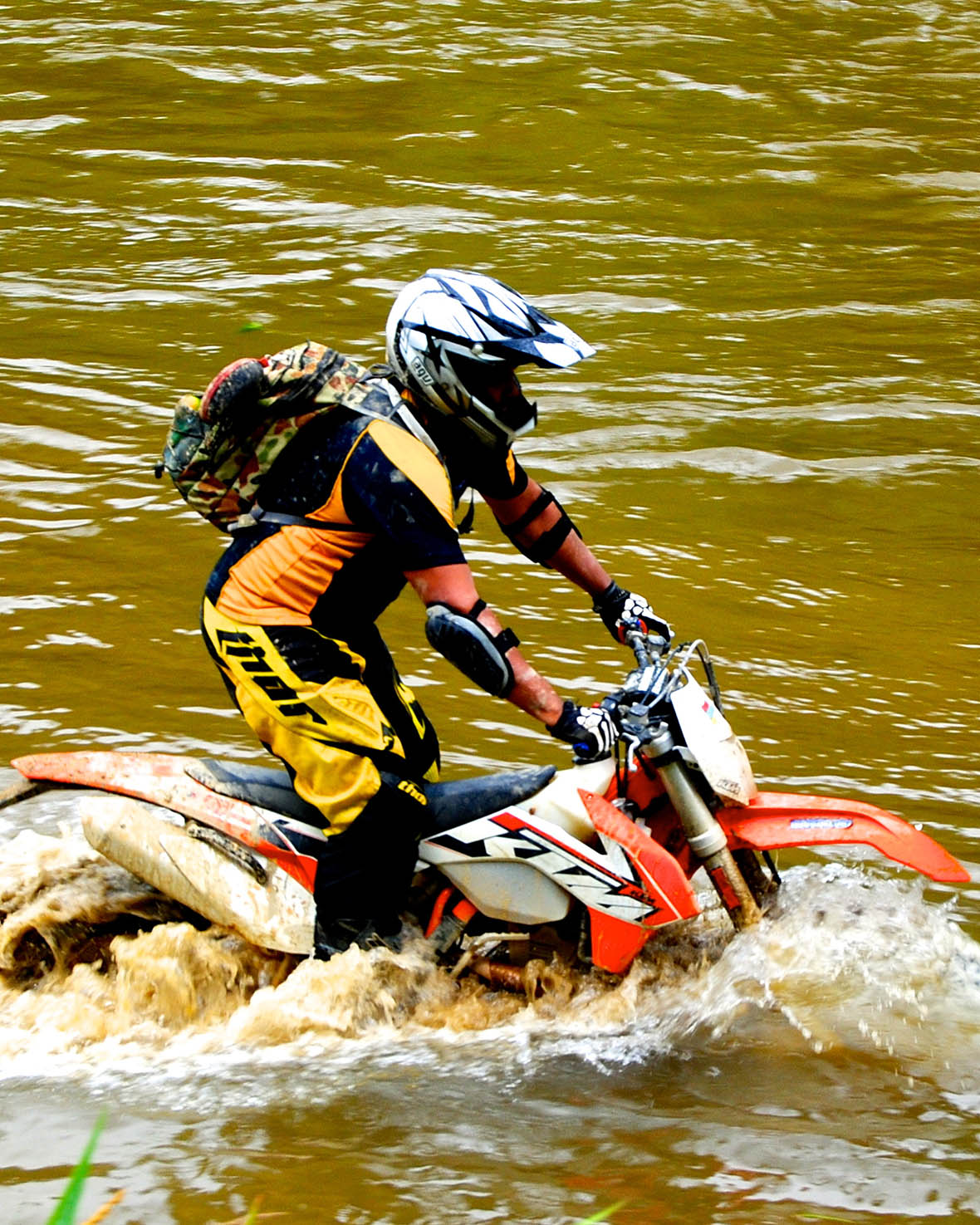
I pull over to snap a few pics, but Malcolm suggests we pick up the pace. The river morphs into a delta at the end of the ravine, he says. And the only way across will be to put our bikes into the back of a flatbed truck. But this service only runs until five in the afternoon. And if we miss the last truck, we’ll have to spend the night on the floor of whatever hut we can find.
We press on and make good time. But in my haste, I stack it on a muddy incline. The fall isn’t bad and I recover in a flash, but a few minutes later my clutch stops working. The chamber that holds the clutch’s hydraulic fluid copped a micro-fracture in the fall and now we have to stop to refill it every 15 minutes. By the time we reach the delta, it’s well past five, and the flatbed truck is nowhere to be seen.
We’re just about to turn around and head back to the nearest village when Malcolm spots a couple of fishermen in dugout canoes. He calls them over and strikes up a deal for them to ferry us—and our bikes—across the delta. It takes four men to lift the bikes into the canoes, a commotion that attracts hundreds of villagers. They cheer and whoop as we take off in a scene that could’ve been cut straight out of the old Alby TV show.
The canoes are remarkably sturdy and have an elevated platform where I comfortably stretch out. I look up at the sky, crimson and lilac, streaked with wispy white clouds and embers of the coming sunset. Yesterday I was in a taxi battling my way through peak-hour traffic en route to Sydney airport. Today, I’m crossing a delta in a dugout paddled by a descendant of a headhunter with a motorcycle in the luggage compartment.
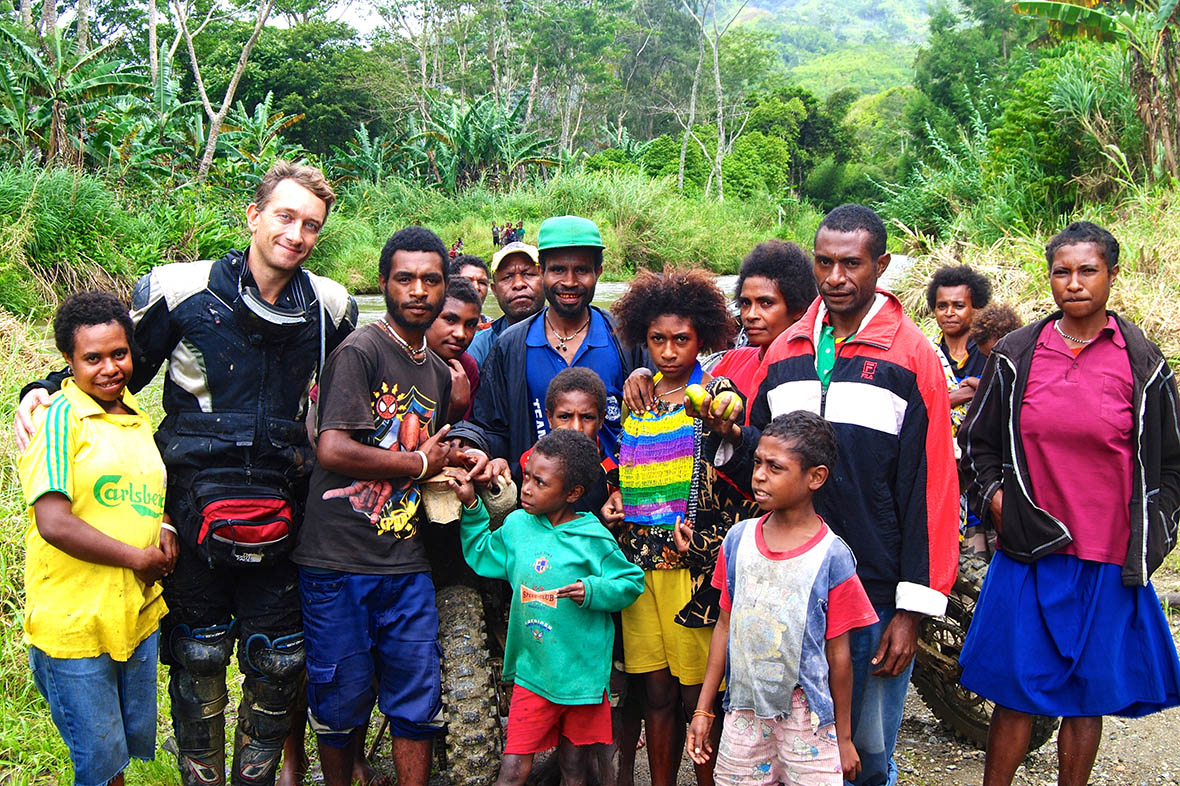
After reaching the other side, we scoot along a paved road that leads to a town called Bulolo. In the 1930s, Bulolo was the site of PNG’s biggest gold rush, and lots of pine trees were planted to provide timber to build houses around the mine. Once extracted, the gold couldn’t be replaced. But pine can be replanted again and again.
Today Bulolo is home to one of the PNG’s most successful sustainable wood plantations—a business that provides jobs for 1,500 people. They live with their families in a gated community on the edge of town with a nine-hole golf course in its centre. The clubhouse has a large balcony overlooking the links where Malcolm and I order a couple of T-bone steaks. We wash them down with a few South Pacific lagers before calling it a night. What a bloody excellent day.
It’s a 100km sprint from Bulolo to Aseki District where the mummies are. The first half of the ride cuts through vast pine plantations before opening up to reveal a valley at the base of the Owen Stanley Ranges. The ranges are home to the famous Kokoda Track where 400 hopelessly outgunned Australian soldiers and their New Guinean porters defeated 2,500 battle-hardened Japanese marines during World War II.
Today the Kokoda Track is a war pilgrimage destination that attracts thousands of Aussie tourists every year.
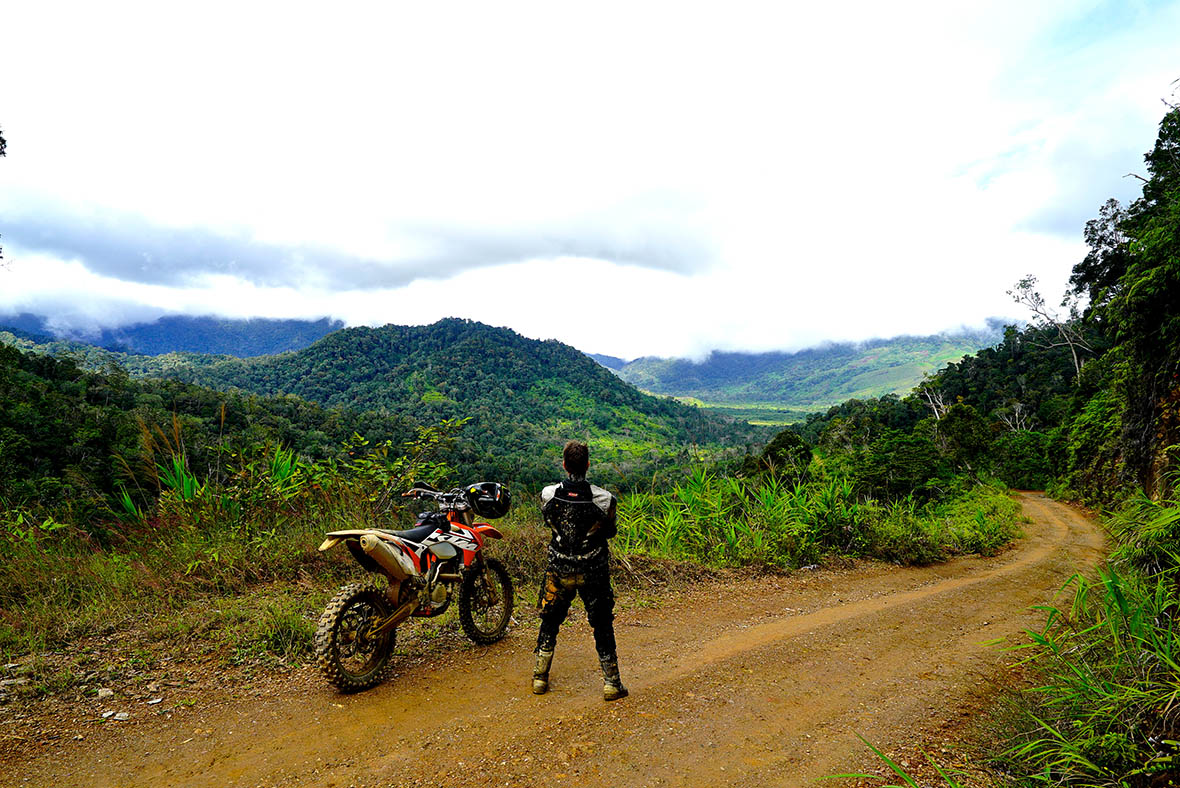
The road drops into a massive valley and then starts rising again through a series of switchbacks. We pass dozens of villages where people race out to cheer and wave hello, not just children but also adults and elders too. I’ve ridden motorbikes all over the world, but nowhere have I seen the kind of reception riders receive in Papua New Guinea. “Up him!” they yell, making the universal sign for a wheelie, cheering like crazy every time we indulge their request.
It takes us four hours to reach Angapenga, the village in Aseki Province where Alby filmed the mummies three decades ago. Here we meet Dickson, a custodian, who directs us to a small clearing about 5km past the village where we park our bikes and leave our jackets and helmets behind. It’s a half-hour slog through the jungle to the mummies. I take the opportunity to ask Dickson a few questions about the mummies. But he has no idea when, how, or why the custom of smoking corpses began – only that influence from Australian missionaries ended the practice sometime after World War II.
The corpses are laid out along a ledge under a cliff to watch over and protect the village. They’re even more gruesome than I imagined, arranged in life-like postures or fetal positions in bamboo frames. There are 14 adults and one infant cradled under its mother’s chest, sucking the remains of a breast that clings to the mother’s skeleton.
It’s been an incredible journey to one of the most bizarre places on earth. And we still have the ride back to Lae to look forward to.

